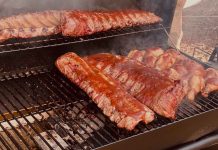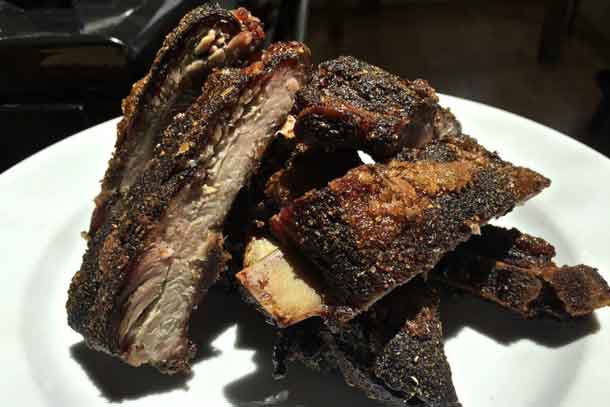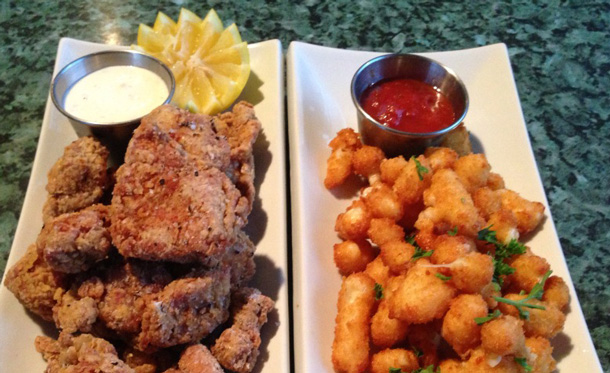There’s something irresistible about the deep, savoury flavour that smoked food provides. This time-honoured cooking method can seem intimidating at first, but with a little patience and practice, anyone can learn to master it. This guide aims to provide beginners with the essential equipment needed and some delicious recipes to get started, specifically focusing on pork spare ribs.
Getting Equipped: Essential Tools for Smoking Food
Before you can embark on your smoking journey, you’ll need to ensure you have the necessary equipment.
The Smoker
There are several types of smokers to choose from depending on your preference, space, and budget. Options include offset smokers, vertical water smokers, box smokers, and pellet smokers. For beginners, a vertical water smoker or a pellet smoker can be a good choice because of their ease of use and price range.
Wood Chips or Chunks
The type of wood you use can dramatically change the flavour profile of your food. For pork, fruitwoods like apple and cherry are recommended, as well as hickory and mesquite for a stronger flavour. You can use wood chips or chunks, with the latter typically providing longer smoke times.
Thermometer
A reliable digital thermometer is a must to ensure your food is cooked to the correct temperature. Some smokers come with built-in thermometers, but an additional meat probe thermometer can provide more accurate results.
Other Accessories
Other useful accessories include tongs for turning and moving food, heat-resistant gloves for safety, and aluminum foil or butcher paper for wrapping meat during cooking.
Your First Smoke: Pork Spare Ribs Recipe
Pork spare ribs are a fantastic cut of meat for beginner smokers due to their forgiving nature and the delicious results they yield. Here’s a simple recipe to get you started.
Ingredients:
- 2 racks of pork spare ribs
- ¼ cup of brown sugar
- ¼ cup of paprika
- 1 tablespoon of black pepper
- 1 tablespoon of salt
- 1 tablespoon of chili powder
- 1 tablespoon of garlic powder
- 1 teaspoon of onion powder
- 1 teaspoon of cayenne pepper
- Your choice of barbecue sauce
Instructions:
- Prepare the Ribs: Remove the membrane from the back of each rack. Mix the dry ingredients together to create the rub, then apply it generously to both sides of the ribs.
- Prep the Smoker: Preheat your smoker to 225°F (107°C) and add your chosen wood.
- Smoke the Ribs: Place the ribs bone-side down in the smoker. Cook for about 3 hours.
- Wrap the Ribs: Remove the ribs from the smoker and wrap them tightly in aluminum foil or butcher paper. Return them to the smoker and cook for another 2 hours.
- Unwrap and Finish: Remove the foil or paper, brush the ribs with your barbecue sauce, and smoke for another hour.
- Rest and Serve: Let the ribs rest for a few minutes before slicing and serving.
This simple recipe provides a starting point for your smoking journey. As you gain experience and confidence, you can experiment with different types of meat, wood, and seasonings to find your favourite combinations.
A wide variety of foods can be smoked to add depth and complexity to their flavor profiles. Here are some of the most popular categories and examples:
- Meat and Poultry: This is the most common category of smoked foods. Virtually any type of meat or poultry can be smoked, but certain cuts are especially popular due to their flavor and texture. These include brisket, pork shoulder, ribs, sausages, chicken (particularly whole or half chickens), turkey, and duck.
- Fish and Seafood: Many types of fish are delicious when smoked. Salmon, trout, and mackerel are among the most popular, but others, such as tuna, can also be smoked. Shellfish, including oysters, clams, and shrimp, also take well to smoking.
- Cheese: While not as common as smoking meats or fish, many types of cheese can be smoked. Hard and semi-hard cheeses like cheddar, gouda, mozzarella, and provolone are some of the best candidates for smoking.
- Vegetables and Fruits: You might not think of smoking fruits and vegetables, but they can absorb smoke and take on a delicious flavor. Corn, peppers, tomatoes, onions, eggplants, and squashes are commonly smoked. As for fruits, peaches, pineapples, and apples can be delicious when smoked.
- Nuts and Seeds: Almonds, pecans, and other nuts can be smoked for a delicious and unique snack. Pumpkin seeds and sunflower seeds are other good options.
- Tofu and Tempeh: For those who follow a vegetarian or vegan diet, tofu and tempeh are excellent candidates for smoking. They absorb the smoky flavor well and take on a delightful texture.
Remember, each type of food requires a different approach to smoking, including differences in preparation, smoking time, and ideal serving suggestions. It’s always a good idea to research and follow specific smoking instructions for each type of food to get the best results.
Remember, the key to smoking is patience. The low-and-slow cooking process may take some time, but the mouth-watering results are more than worth the wait. Happy smoking!





